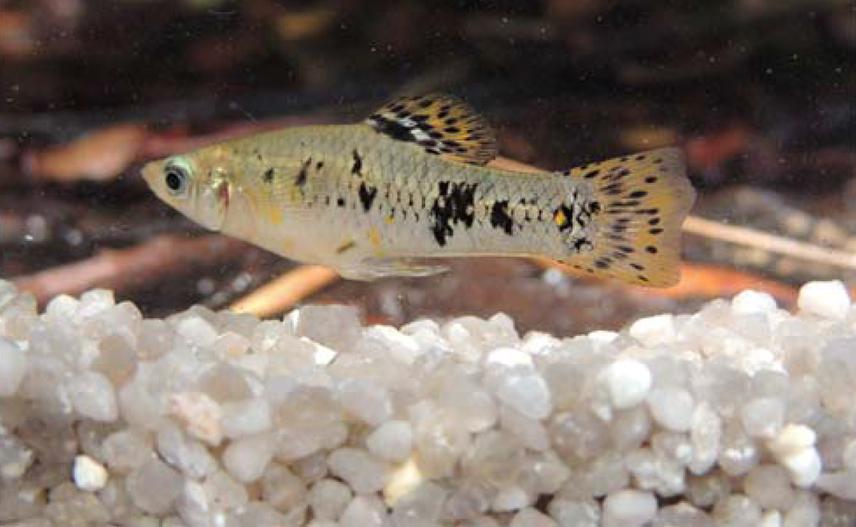Sheila Rodríguez-Machado
The aims of this project are:
1) to characterize the genetic diversity of the genus Limia in Cuba,
2) to determine if there exist cryptic species and
3) to carry out awareness campaign mainly in those local communities and protected areas where the threatened lineages occur.

Limia vittata male from Macaca River, at Granma province. © Tomás M. Rodríguez
The information derived from molecular studies is crucial for wildlife conservation. The West Indian genus Limia occurs in Cuba, Jamaica, Grand Cayman Islands, and Hispaniola. This genus comprises ca. 18 species on Hispaniola and surprisingly a single recognized species on the other islands. Despite the current efforts to clarify taxonomical and biogeographical issues regarding Cuban fishes, the information on the molecular genetics of some poeciliid groups is still scarce, limiting the knowledge on their phylogeny and biogeography, with strong implications for conservation planning.
Recent molecular studies in western Cuba revealed relatively low genetic divergence among some populations of L. vittata. However, there is not information on the populations from the central and eastern regions, the later widely recognized as the most important region of the archipelago in terms of biodiversity and endemism. That suggests that the number of species of this genus in Cuba could be underestimated, which makes difficult delimiting units for conservation. Limia vittata is endemic to Cuba but there is little information about its origin, evolution and dispersal within the archipelago.
The main goals of this project are:
1) to characterize the genetic diversity of the genus Limia in Cuba
2) to determine if there exist cryptic species. Also, it will be carried out an awareness campaign by giving talks and displaying posters and field guides mainly in those local communities and protected areas where the threatened lineages occur.
This project will start in July 2015 for one year length and most localities in which L. vittata has been previously reported and others where it probably occurs will be visited. This species inhabits lowland ecosystems, having a wide tolerance to salt water. Thus, it will be sampled rivers, freshwater and brackish lagoons and coastal areas across Cuban archipelago. This project will be the first study on the population genetic structure and phylogeography of L. vittata, and it will allow identifying possible discrete lineages within L. vittata, whose conservation status is so far unknown.